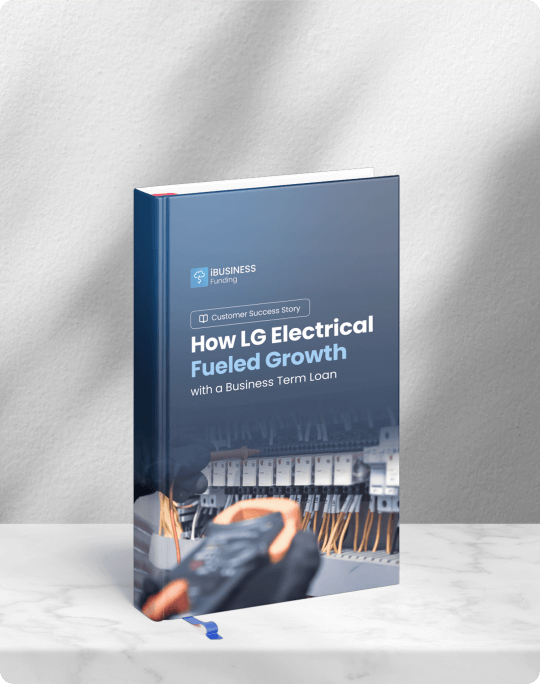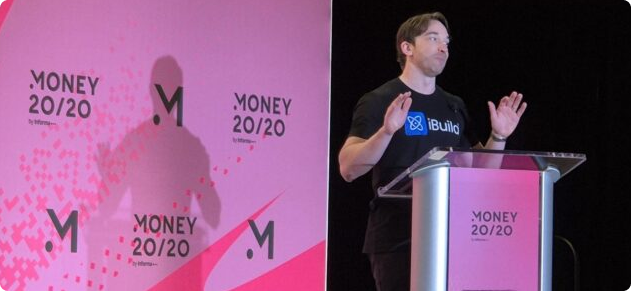
Top 10 Industries Leading SBA Loan Approvals Under $500K in FY2024
Small businesses are the heart of the U.S. economy, and SBA loans are key to helping them grow and succeed. Within the vast spectrum of businesses served by SBA, smaller businesses with credit needs under $500,000 are typically the most underserved and least understood segment for lenders – but they can also be the most profitable sectors if served well. In this article, we’ll explore the top 10 industries that led the way in SBA loan approvals under $500K in 2024 to help you better understand the needs of these small businesses and how best to address them through your SBA offerings.
Why Loan Sizes Under $500,000 Matter
Loans under $500,000 are especially important for small businesses that don't require large investments to expand or operate. These loans offer an accessible entry point for entrepreneurs, enabling them to grow their businesses without taking on excessive debt. For lenders, these smaller loan amounts present a way to support diverse industries while minimizing risk.
Top 10 Industries Receiving SBA Loans Under $500,000
The top 10 industries leading SBA loan approvals for 2024 reveal several key takeaways for 2025 and beyond. These sectors represent a blend of essential services, emerging trends, and consumer-driven demands that highlight evolving opportunities for both lenders and small business owners.
1. Full-Service Restaurants ($419.4M)

In 2024, the full-service restaurant industry emerged as the leading recipient of SBA 7(a) loans, securing $419.4 million in funding—an increase of nearly $55 million from the previous year. While this growth signifies a recovery, it still falls $100 million short of the record-setting $520 million approved in 2007, before the 2008 financial crisis. Over the past 25 years, full-service restaurants have consistently ranked among the top recipients of SBA loans under $500K, cementing their status as a key segment in small business funding.
The industry has faced substantial challenges, particularly during economic downturns when reduced consumer spending made dining out less of a priority. The COVID-19 pandemic further compounded these difficulties, dramatically shifting consumer behavior. Nevertheless, the sector has exhibited remarkable resilience. In recent years, SBA loans have played a pivotal role in helping restaurant owners adapt, innovate, and recover from the far-reaching effects of the pandemic.
2. Limited-Service Restaurants ($320.3M)

In 2024, limited-service restaurants secured the second-largest share of SBA loan funding under $500,000, with $320.3 million approved—a modest increase from $314 million in 2023. This steady growth highlights the sector's ability to adapt in a rapidly changing market.
By the end of 2022, SBA funding for limited-service restaurants stood at $238 million. The recovery since then reflects broader industry trends and the resilience of these businesses in addressing evolving consumer preferences. The pandemic spurred a surge in mobile ordering, delivery apps, and contactless technology, reshaping the limited-service restaurant landscape.
With lower overhead costs and an inherent agility, these establishments were well-positioned to embrace technological innovations, enhance scalability, and streamline operations. By investing in these advancements, limited-service restaurants have increased their capacity to serve more customers efficiently while maximizing profitability, making them increasingly attractive candidates for SBA funding.
3. Fitness and Recreational Services ($191.8M)

In 2024, the fitness and recreational industry was the third largest recipient of SBA loan funding under $500K. In total, businesses in this sector secured $192 million —a $20 million increase over the previous year. This surge highlights the sector’s expanding role in promoting healthier lifestyles and meeting growing consumer demand for fitness and wellness services.
Fitness businesses, with their relatively low cost of entry, are an ideal fit for SBA loans under $500,000, providing owners the flexibility to test new markets, introduce specialized services, or upgrade facilities without overextending financially. Additionally, the industry’s digital shift, accelerated by the pandemic, has driven even more SBA loan approvals. These loans support businesses in developing virtual offerings like on-demand workouts, live-streamed classes, and personalized training programs, allowing them to reach a wider audience. With the demand for both in-person and virtual fitness experiences continuing to grow, SBA loans are empowering businesses to diversify and stay competitive in a rapidly evolving market.
4. Residential Remodelers ($178M)

In 2024, residential remodelers secured over $178 million in SBA-approved funding, showcasing one of the year's most remarkable growth trends. Since 2022, funding for this sector has surged by nearly $50 million annually. Starting at $80 million in 2022, approvals rose to $129 million in 2023, culminating in this year’s impressive total. This steady climb reflects the booming demand for home renovation and improvement projects.
With relatively low upfront costs compared to large-scale construction, remodeling businesses are an ideal fit for SBA loans under $500,000. These loans empower remodelers to take on more projects simultaneously, boost revenue potential, and scale efficiently during peak seasons.
5. Plumbing, Heating, and Air Conditioning Contractors ($171.7M)

The plumbing, heating, and air conditioning (HVAC) industry experienced a significant rise in SBA funding in 2024, securing $171.7 million—an increase from $87 million in 2022 and $125 million in 2023. This marks an additional $47 million in funding compared to the previous year.
Several factors are driving this growth. One major influence is the growing impact of shifting weather patterns, with more consumers seeking efficient heating and cooling solutions to adapt. Additionally, the increasing focus on solar energy and renewable technologies, supported by tax credits and government incentives, has prompted contractors to invest in eco-friendly upgrades and certifications.
SBA loans under $500,000 provide HVAC businesses with the flexibility to adopt new technologies, expand their services, and stay competitive in an evolving market, meeting customer demands for energy-efficient and sustainable solutions.
6. Specialty Trade Contractors ($171M)

Like the plumbing and HVAC sector, specialty trade contractors such as painters, carpenters, and roofers experienced notable growth in SBA-approved funding, rising from $125 million in 2023 to $171 million in 2024. Driven by the ongoing surge in construction projects, businesses offering services such as electrical work, tile installation, and other specialized trades increasingly rely on SBA loans to meet their needs.
These loans help contractors cover material costs, invest in upgraded tools, and take on larger, more complex projects. As construction demand continues to rise, accessible funding remains a critical resource for these businesses to scale and succeed.
7. Snack and Nonalcoholic Beverage Bars ($147.6M)

The snack and non-alcoholic beverage bar sector saw steady year-over-year growth in SBA-approved funding for 2024, increasing slightly to $148 million with an average loan size of $196K. This stability is likely fueled by rising interest in “sober-curious” drinks, the expansion of remote work, and a growing emphasis on community connection.
Coffee shops, juice bars, and smoothie bars have become everyday staples, offering both convenience and comfort to customers. Their relatively low startup costs and ability to generate repeat business make them strong candidates for SBA loans under $500,000. These loans enable businesses to secure prime locations, invest in quality equipment, and develop creative menu offerings.
At the core of their success is community engagement. SBA loans help businesses create inviting spaces where customers can gather, work, or relax, driving customer loyalty and repeat visits. This sector demonstrates how smaller loans can fuel growth, encourage innovation, and build stronger connections within the communities they serve.
8. Landscaping Services ($134.3M)

Landscaping services for both residential and commercial clients had a record-breaking year in 2024, securing $134 million in SBA-approved funding—a notable increase from $106 million in 2023. What’s behind this jump?
Landscaping businesses are tapping into SBA loans to finance equipment purchases, hire seasonal workers, and expand into eco-friendly services like xeriscaping and smart irrigation systems. As environmental consciousness grows, many businesses are adopting these sustainable solutions to attract eco-minded customers, fueling their demand for financing.
With relatively low upfront costs for equipment and seasonal labor, landscaping businesses are prime candidates for smaller SBA loans. These loans allow businesses to scale quickly during peak seasons, stay nimble in response to market shifts, and continue offering innovative, environmentally friendly services to meet evolving customer needs.
9. Childcare Services ($118.9M)

Childcare services was among the many industries to experience record-breaking SBA funding in 2024, jumping from $92 million in 2023 to $119 million. This growth is part of a broader trend over the past two decades, reflecting the increasing demand for childcare services and the vital role SBA loans play in supporting this industry.
SBA loans provide essential flexibility for childcare providers, enabling them to expand facilities, purchase safety equipment, hire additional staff, and introduce educational or extracurricular programs that enhance their offerings. In this highly regulated field, compliance with licensing standards is crucial. SBA loans help providers meet these requirements while maintaining safe, welcoming environments for children, giving peace of mind to families.
Given the incremental nature of their investments—whether upgrading facilities or expanding programs—childcare businesses are a perfect fit for SBA loans under $500,000. These loans empower providers to scale efficiently, maintain high-quality care, and respond to growing community needs.
10. General Automotive Repair ($112.7M)

In 2024, general automotive repair businesses secured $113 million in SBA-approved funding. While not the sector's highest year on record, this represents a significant year-over-year increase, rising nearly $20 million from 2023.
SBA loans help repair shops stock up on parts, invest in diagnostic tools, and maintain efficient operations. These businesses play a crucial role in ensuring vehicles remain safe and reliable, meeting the ongoing demand for vehicle maintenance and repair services.
One key driver of this funding boost is the rise of electric vehicles (EVs). As EVs become more common, repair shops are using SBA loans to prepare for the future—whether by purchasing specialized tools or providing staff training. These investments enable shops to adapt to new technologies, ensuring they stay relevant and continue to serve as trusted resources for all car owners, whether driving traditional or electric vehicles.
Industry Intelligence and Opportunities for Lenders
The top 10 industries leading SBA loan approvals in 2024 share several key characteristics:
- Resilient Consumer Demand: Full-service and limited-service restaurants collectively secured $739.7M in SBA loans, underlining consistent consumer demand for dining and convenience. Similarly, fitness services ($191.8M) maintained strong demand, due to evolving lifestyle priorities. This suggests stable and ongoing opportunities for lenders as businesses in these sectors continue to thrive even in fluctuating economic conditions.
- Alignment with Market Trends: Several sectors embraced technological advancements—restaurants leveraging mobile ordering, fitness centers expanding online offerings, and auto shops preparing for electric vehicles—allowing them to sustain or grow their appeal. Lenders can expect growth in these areas by supporting businesses that are proactive in embracing innovation, technology, and sustainability.
- Sustainability and Adaptability: As industries like landscaping services and HVAC contractors increasingly adopt sustainable practices, such as xeriscaping and energy-efficient systems, lenders can look to support businesses that are focused on long-term, environmentally conscious growth.
- Scalable Business Models: Many of the top 10 industries, like limited-service restaurants, fitness businesses, and snack/beverage bars, are highly scalable. These industries leverage smaller loans to expand efficiently, making them attractive for lenders seeking to mitigate risk while still supporting growth.
- Essential Services: Essential services like childcare and auto repair maintained steady growth, underlining their essential role in local economies. These sectors' stability provides reliable opportunities for lenders, as businesses in these fields are less vulnerable to market volatility. Whether supporting working parents through childcare services or ensuring reliable transportation through auto repair, these industries remain vital to community infrastructure
Conclusion
Our analysis of SBA loan approvals for FY 2024 reveals that industry growth is being driven by consumer spending trends. The sustained demand for essential services—such as childcare and auto repair—demonstrates the ongoing importance of these sectors to local economies, creating strong capital demand. Additionally, industries that are quick to embrace emerging trends, like fitness services and HVAC, are positioned for continued growth as consumer preferences shift.
For lenders, this presents an opportunity to support businesses that are not only essential but also innovative and adaptable. For small business owners, it’s a call to secure capital that will enable them to invest in technology, sustainability, and meet emerging consumer needs in order to stay competitive. Whether seeking to scale, innovate, or expand, the SBA loan program remains an invaluable resource for success in today’s dynamic business environment.
Interested in learning how LenderAI Intelligence can help you identify top-performing industries and refine your lending strategy? Create your free account today for immediate access to the information you need.











.png)
.png)
.png)



.svg)